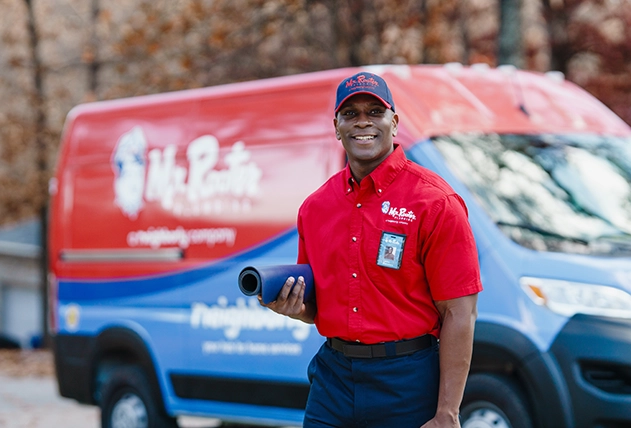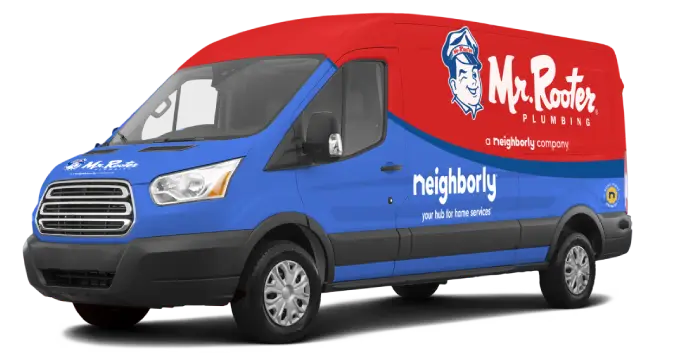A small leak behind your washing machine might not seem urgent until it floods your laundry room, damages your floors, or invites mold growth. Washer hose problems are one of the most common causes of household water damage, but thankfully, they are also among the easiest to prevent.
Washer line maintenance is a simple but essential part of caring for your home plumbing. At Mr. Rooter Plumbing in Rochester, NY, we’re here to help you understand the risks, recognize warning signs, and take the right steps to keep your washer lines in top shape.
Why Washer Line Maintenance Matters
Your washing machine depends on three critical hoses to deliver and remove water during each cycle. If any one of them fails, whether due to age, loose fittings, or blockage, it can lead to leaks, low washer performance, or even a full-blown flood. Regular maintenance improves safety, extends the life of your machine, and gives you peace of mind.
Understanding the Three Essential Washer Hoses
Every standard washer connects to three hoses: one for hot water, one for cold water, and one to drain used water. Each has its own function and unique risks, and they all experience wear over time. The hot and cold water hoses carry constant water pressure and are prone to cracking or bursting if not inspected routinely. The drain hose is equally important, as a clog or disconnection can quickly lead to overflow. These components are often out of sight behind your washer, which makes it easy to forget about them until something goes wrong. Knowing their roles helps you take action before costly issues arise.
Hot Water Hose
This hose delivers hot water from your home’s water heater into the washer. Since it handles high temperatures and pressure, it tends to wear out faster. Signs of trouble include soft spots, cracking, or bulging.
Cold Water Hose
The cold water hose supplies unheated water to the washer. Though it doesn’t face the same heat stress, it’s equally important to monitor it for wear, especially at the connection points.
Drain Hose
The drain hose removes wastewater from the machine after the rinse and spin cycles. If it becomes clogged or detaches from the drain, it can spill water across your floor or back up into your machine.
Common Risks of Ignoring Washer Hose Safety
Aging or neglected washer hoses can lead to serious consequences, including:
- Leaks that cause structural damage
- Mold growth due to persistent dampness
- Higher utility bills from unnoticed drips
- Machine malfunctions or inefficient cycles
These are preventable problems when washer hose safety is made a routine part of home maintenance.
How to Perform Regular Washer Line Maintenance
Maintaining your washer lines doesn’t require technical expertise. It only takes a few minutes every month to check for wear and protect your home from avoidable plumbing emergencies.
A visual inspection, hose replacement on schedule, and mindful installation are the most effective ways to stay ahead of damage. The more proactive you are, the less likely you'll have to deal with unexpected water leaks or washer performance issues.
Inspect Hoses Every Month
Check each hose for:
- Cracks or abrasions
- Corrosion at the fittings
- Moisture or puddles near the connection points
Use a flashlight to get a clear look behind your washer and confirm nothing is pinched or pulling.
Replace Hoses Every 3 to 5 Years
Even without visible damage, hoses degrade internally. It’s recommended to replace all three every 3 to 5 years. Braided stainless steel hoses offer added durability and are less prone to bursting than rubber ones.
Ensure Proper Hose Installation
Avoid sharp bends or tight turns. Allow several inches of clearance between the washer and the wall to prevent pressure or pinching, which can shorten the hose’s life.
Flush the Drain Hose
Residue from detergent and lint can collect inside the drain line. If your washer drains slowly or gives off musty odors, disconnect the hose and rinse it thoroughly with clean water.
Warning Signs That It’s Time to Call a Professional
Not every problem is a DIY fix. If you notice persistent leaks even after tightening connections, unusual vibrations or loud noises during the wash or spin cycles, or moldy smells coming from behind the machine, it may be time to bring in a professional. Rusted or stuck fittings that won’t loosen or visible water pooling under or around the appliance are also strong indicators that expert help is needed.
At Mr. Rooter Plumbing, we can inspect your washer hoses, verify proper washer line function, and resolve any underlying plumbing issues that may be contributing to the problem.
Extra Washer Hose Safety Tips
Preventative measures can offer another layer of protection, especially when you're away from home:
- Turn off the hot and cold water supply valves if you’re going to be gone for more than a few days
- Install an automatic shutoff valve that detects leaks
- Use flood-safe hoses with built-in shutoff mechanisms
- Keep the laundry area accessible so you can easily check hoses and fittings
These small steps can make a big difference when it comes to preventing long-term damage.
Protect Your Home with Washer Line Maintenance
Washer line maintenance is easy to overlook, but hard to ignore once things go wrong. By regularly checking your hot water hose, cold water hose, and drain hose, you’re taking an active role in protecting your home, preserving your appliance, and preventing costly plumbing issues.
If it’s time for a washer hose replacement or you’re unsure about the condition of your lines, don’t wait for a problem to appear. Contact the professionals at Mr. Rooter Plumbing in Rochester, NY, for friendly, thorough service.

